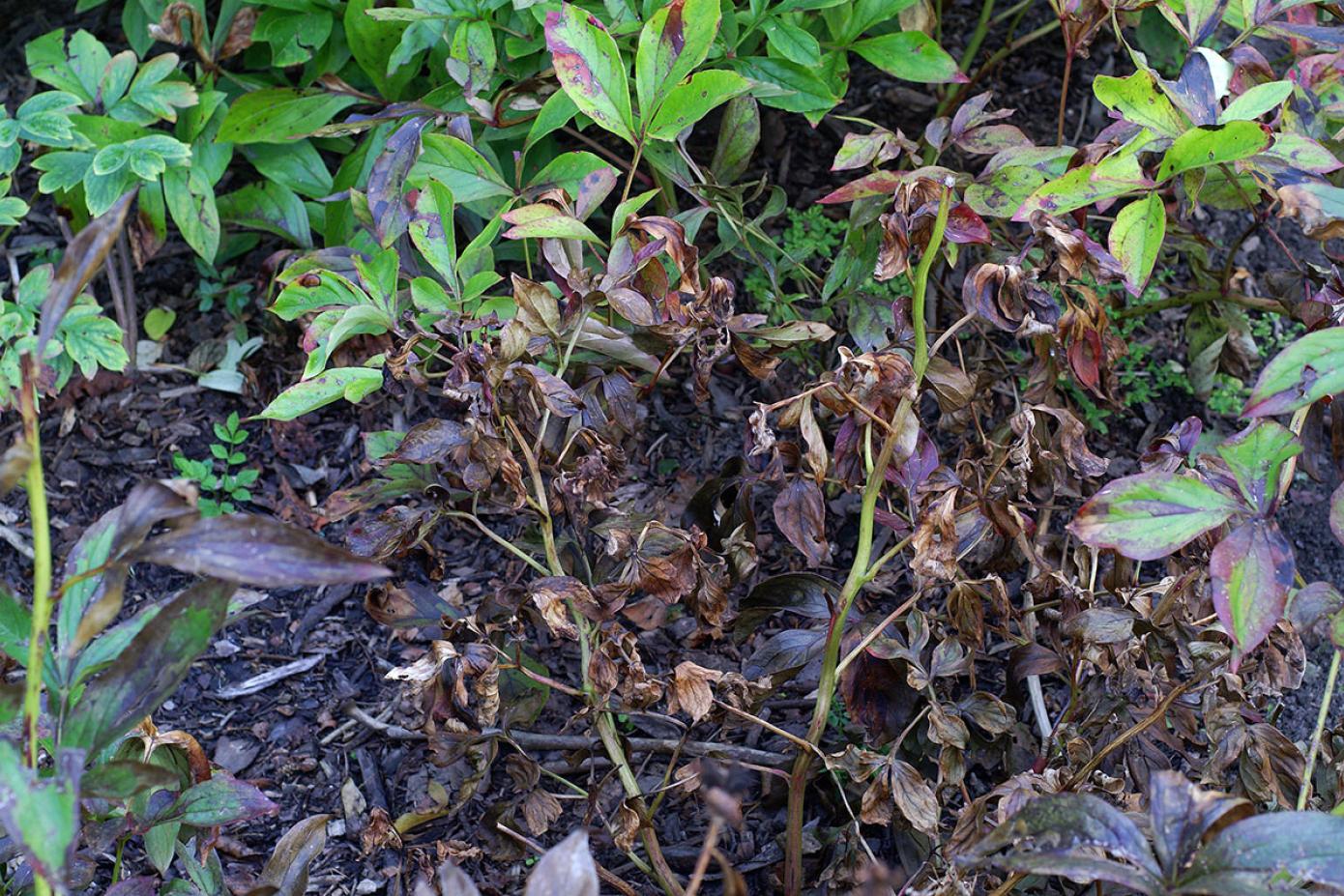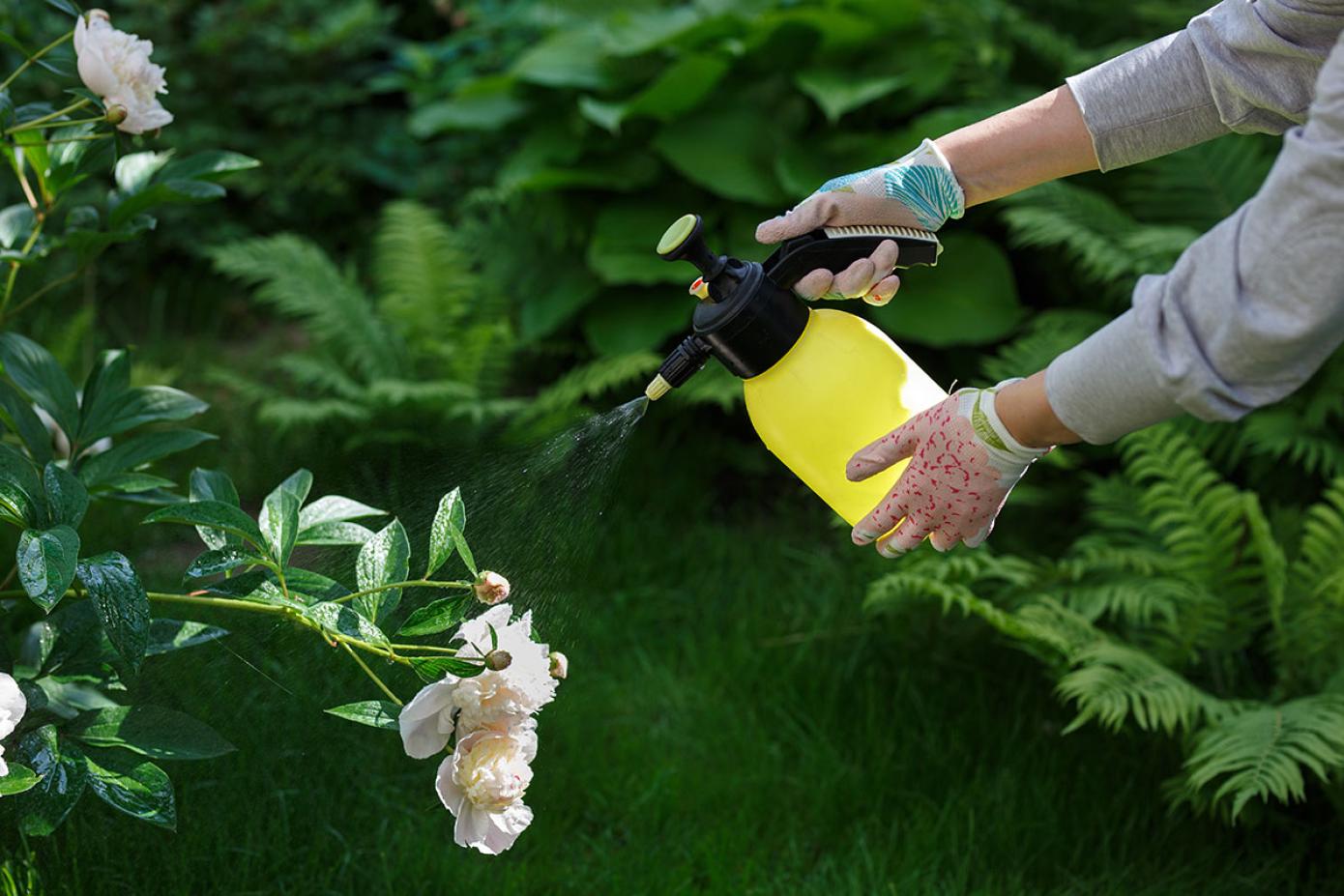Disease Research
This peony garden is a research center – and the long-term disease susceptibility is important to track. By contrast, home gardeners may wish to be much more aggressive when it is appropriate.

Botrytis
After a particularly rainy year, peonies can develop botrytis, a disease that causes blackening of the leaves, stems, and flower buds. Removal of infected parts is crucial to ensure your peony’s survival. Place these diseased parts in the trash, or burn them–botrytis can live on in your soil or compost and spread to other areas of the garden.
Treat your peony for botrytis in the spring. Spray emerging shoots with modern Bordeaux mix, a copper-sulphur organic fungicide. Spray again when leaves emerge, then weekly or bi-weekly as the buds begin to form.
Powdery Mildew
Powdery mildew is another common affliction of peonies. There are many species of this fungus–most thrive in humid conditions that cause excess moisture.
Treatments for powdery mildew can include horticultural oil or neem oil.
You can also make your own solution: add a tablespoon each of baking soda, horticultural oil (or canola oil), and liquid dish soap to a gallon of water. Spray on your peony every 10-14 days during the summer. Avoid applying the solution on hot, sunny days–the excess moisture can burn your peony’s leaves.
